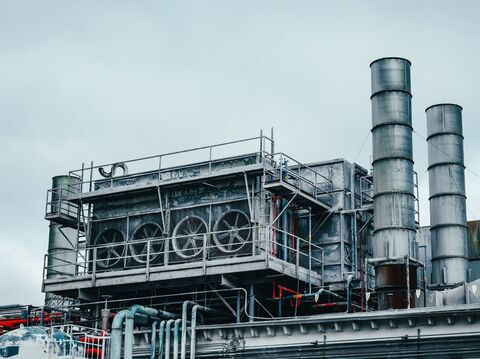Comprehend the Value of Operating Model in Natural Resources Industry

Great companies have inspiring visions to bring about developments and enhance businesses. The key to achieving those goals lies in a blueprint for how the employees should work and operate. This is where operating models come in.
When it comes to natural resources, operations research is becoming increasingly prevalent, specifically in agriculture, forestry, fisheries, and mining. There is a significant focus on harvesting and extracting them, accounting for environmental impacts, etc. These include the time of replenishment and resource availability.
This will be an insightful read if you want to learn about operating models and their contribution to growth and development.
What is an Operating Model?

A product operating model is the bridge between strategy and day-to-day operations. Employees can learn about and refer to these strategies to gain perspective on the context and realize the company's strategy and vision. As a result, models must be linked to a larger context.
How does an operating model work?
Visionary leaders have experienced and enhanced their visibility into the impacts and trade-offs of strategic decisions on daily operations. They use their expertise to create operating models to increase engagement in strategy by providing a clearer view of the what, why and how.
Hence, understanding how the entire business process affects employees, teams and technology is crucial.
-
Core elements of an operating model: Design/service principles, culture and values, authority, functional processes, etc.
-
Other features include Performance management, Information Technology, service delivery, risk management, etc.
Functioning of an operating model
An operating model in any industry interprets strategic objectives into operational capabilities. It serves as the foundation for operations and acts as a guide for managers and team leaders. For instance, one can find the purpose, guidelines, process maps, policies, organizational roadmap, tools, systems, etc.
These lead to delivering the strategy through process optimisation. We at GrowthJockey strive for efficient operations to promote faster growth. Our focus lies in employing marketing trends so businesses can reach out to a larger audience.
P.S. The operating model is not the strategy itself. It helps refine and reinforce the plan with the best possible roadmap.
Operating Models in the Natural Resource Industry
Natural resources have varied features in the productive process that call for separate classifications. Consequently, its management needs multiple approaches based on the relevant criteria chosen for the proposed goals.
These criteria led to the formulation of unique models and features that the natural resource industry seeks to rely on. Further, the operating model for natural resources needs to consider the social importance of resource misuse. One needs to account for the social opportunity cost and the total economic value of any particular resource.
Let us consider mining. There are several factors associated with creating an operating model for mining.
Profit rate fluctuations
These fluctuations can severely impact price production trends. It may lead to sub-optimal rates of income over time.
Fluctuations in extraction cost
Extraction cost can increase or decrease based on labour availability, wage growth, accessibility, etc. With higher extraction costs, the depletion time of reserves increases.
Charging system
Excise duties and taxes slow the depletion process as there will be less mining and vice-versa.
Any natural resource industry must focus on these factors to prepare an operating model for sustainable growth. However, these criteria may vary from one resource to another depending on demand and availability.
Operating Model Industry in India
In India, the NRDMS Programme is a geospatial technology that aims to promote R&D to solve area-specific problems. It stands for Natural Resources Data Management System enabling local self-governance. For example, it has been used to revive village ponds to aid good governance and contribute to Digital India programs.
The government organises training courses on geospatial technologies and applications to develop capacity in such areas. Such policies have contributed to measurable progress in the natural resource domain -
National Data Sharing and Accessibility Policy (NDSAP)
NDSAP is a national open data-sharing portal to share government data with the public proactively. More than 1 lakh data sets are contributed by more than 108 Central Govt. departments/ Ministries on the portal. Indian citizens can have free access to these.
Further, some state governments, such as Assam, Odisha, Sikkim, Madhya Pradesh, Telangana, etc., have created their policies along similar lines.
Revival of Village Ponds
The revival of village ponds has been possible due to available data at the grass-roots level. Data associated with village water bodies helps recharge the groundwater and bring the water table up. Both academic institutions and village farmers work together under a coordinated programme to preserve natural resources.
Further, the programme caters to various agroecological regions in India to ensure proper representation of the test sites.
Organisational model requirements to achieve any industry's vision
Building a next-generation operations and maintenance model requires at least the minimum capabilities to continue steady-state operations. As the business progresses, the value of operating model increases. So, there is a need for an experienced asset operator to accommodate the capacity to address integrity challenges.
For example, additional technicians should be on standby for spontaneous trips. It can avoid delays and facilitate progress. Any industry needs to focus on these three aspects for a functional operating model.
Fluid teaming
In today's generation, the focus should be on an agile organizational structure. For example, an equipment improvement team is cross-functional and can solve varied challenges such as engineering, maintenance or supply chain.
There is self-management and end-to-end accountability for the equipment's reliability. Each team sets out a performance target associated with proper compensation and benefits.
Redefining skill requirements
Digitised operations are improving work-scope predictability, and unmanned operations are more feasible. Companies can focus on an integrated remote operations center staffed with data scientists and operations-skilled digital translators. It can foster production optimization at the highest level.
Innovative partnerships for secondary and peak load activities
Traditional contracting is more of a risk-sharing partnership. There can be a shift to tailored partnerships across sectors. For instance, A sizeable upstream oil and gas company entered a long-term contract with two asset management contractors to increase production.
The company owned the reserves, and the contractors operated under a cost recovery model with a bonus for higher cash flows. Overall, organisations must ensure access to the right talent within the asset's business context. Organisational agility can achieve this without compromising processes or personnel safety.
What can companies do to increase the scope of operating models?
According to GrowthJockey, companies across industries can successfully foster growth if they establish a sound strategy. They can bring about the following specific set of big moves:
-
Access new markets or capabilities through mergers and acquisitions
-
Invest in capabilities and value-creating activities at a significant scale
-
Aggressively allocate resources to those capabilities and activities
-
Improve productivity by focusing on skills, technology, etc.
Wrapping Up
Many companies are looking forward to transforming their operating models. However, performances have seen pitfalls with uneven growth. There is a dire need to increase the efficiency levels of many service industries.
For this, businesses must focus on the primary "axis of change" —from customer expectations to technology. Further, there is a need to build a combination of capabilities in a sequence that can yield desired results.
However, there is a moral and legal obligation to maintain the balance of nature. Natural resources industries need to consider depletion levels, the renewability of a resource, etc. Businesses should account for sustainable development while they try to achieve monetary gains.
To achieve this, GrowthJockey can help businesses with a unique growth model specially curated by the ops and tech teams.
At GrowthJockey, we are fully committed to developing customised operating models that effectively address the critical challenges faced by our clients across various industries. Irrespective of your company's size, whether it's a small-scale enterprise or a large corporation, you can now benefit from our tailored solutions.
Get in touch with us today to scale your business by attaining perfection in your operating model!








